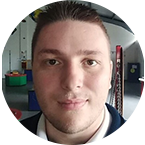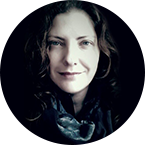Programme
- Parallel Session E-2
- Co-design
- Panel
Communicating Big Science
Session Concept:
Big science is the future of science research, but how can science centres position themselves as the big science communicators? Large scale multinational science projects are becoming the norm. These include, to name but a few, the Square Kilometre Array, the Human Brain Project, citizen science projects, and biotechnology. Communicating big science requires science centres to engage with stakeholders and policy makers at all levels, both within and outside of the respective project. It aims to amalgamate all these various different cohorts into a shared vision and understanding, striving towards an active inclusion of various perceptions, concerns and the ultimate outcome expected for each cohort. This session will explore how science centres work collaboratively, both with each other and other stakeholders, to co-create an effective framework for communicating big science. What collaboration and co-design framework should be adopted for effectively communicating big science?
Moderator
- M J Schwartz
- Project Officer, UNIZULU Science Centre
- South Africa

Speaker
- M J Schwartz
- Project Officer, UNIZULU Science Centre
- South Africa
- Communicating big science requires the invested interest of various stakeholders, with unique expectations and priorities. Science communication often takes place at a grassroots level, the potential of which will be explored for various international projects.
- Jan Davis
- Bastion Technologies, Inc.
- United States
- Dr. Jan Davis is a former NASA executive and astronaut, flying on three Space Shuttle missions, including Spacelab J with Mamoru Mohri. She currently works for NASA contractor Bastion Technologies in Huntsville, Alabama.
- Lorenzo Raynard and Anja Fourie
- Square Kilometer Array South Africa
- South Africa
- Presenters manage the communications unit of the South African Radio Astronomy Observatory spearheading South Africa’s activities in the Square Kilometre Array Radio Telescope, an international effort to build the world’s largest and most sensitive radio telescope.
- Walter G.F. Staveloz
- Director of International Relations, ASTC
- United States
- Biotechnology is seen both as an opportunity and a threat. The World Biotech Tour aims at creating awareness of the reality of Biotech and educates youngsters to communicate with diverse audiences.
- Bobby Cerini
- Inspiring Australia
- Australia
- Dr. Cerini’s work requires reaching out beyond science centres to engage with diverse stakeholders and leading data visualisation and film production for Geoscience Australia and creating interactive experiences for science centres and research agencies.







